Holly Blue
© Paul Kitchener (Flickr)

Holly hedge © Jamie Davies (Unsplash)
Holly is a slow growing tree that lives for up to 300 years, in time they can reach over 15m tall, however, most only grow to 2–3m.
Holly is a familiar tree and one of the few evergreen hardwood tree species that are native to the UK
Leaves: Their leaves are 5–12 cm long and evergreen, lasting up to five years. They are dark green on top, lighter on the bottom, leathery, and shiny.
Holly can make different shapes of leaves simultaneously, ranging from prickly to smooth, this ability is called heterophylly.
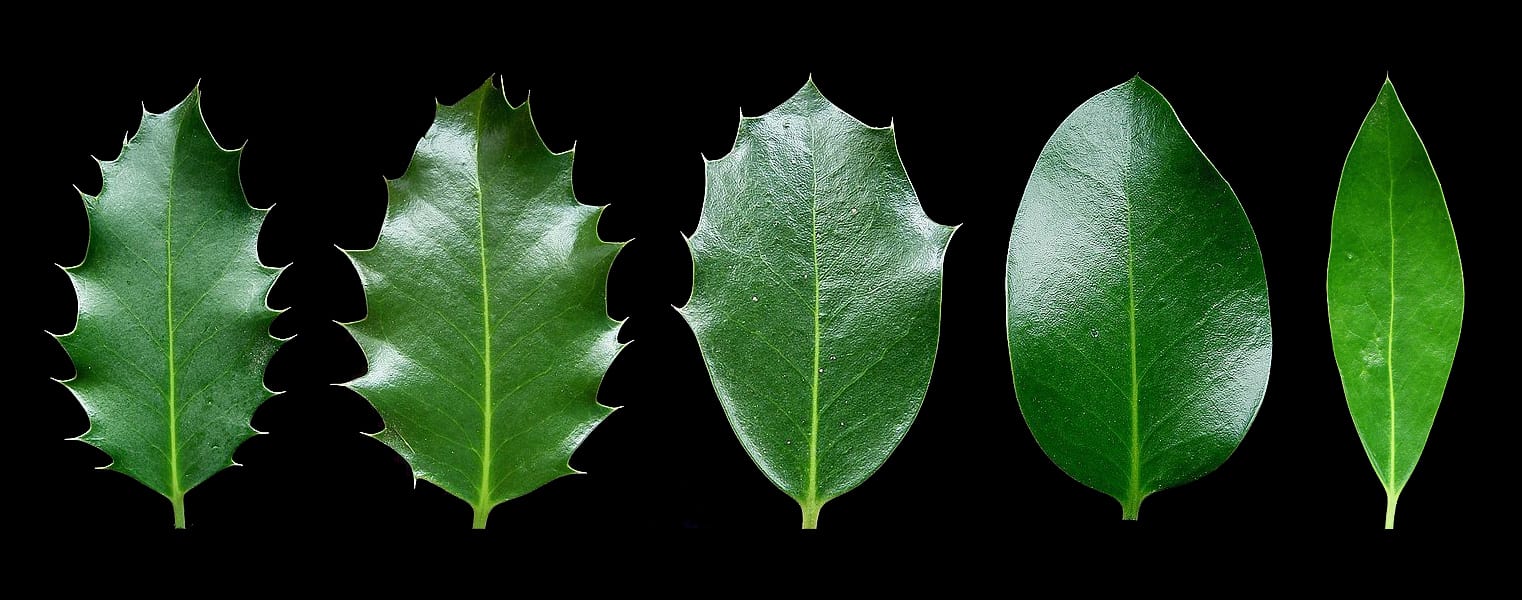
Five leaves from the same plant showing the vatiety of leaf shapes in Holly © Frank Vincentz (Wikimedia)
Flowers: Holly is dioecious, having both male and female trees. The sex of a tree won't be known until it flowers, which takes four to twelve years. Their flowers are tiny (just 6mm across), white and have four petals. The flowers on male trees have a pleasant fragrance.
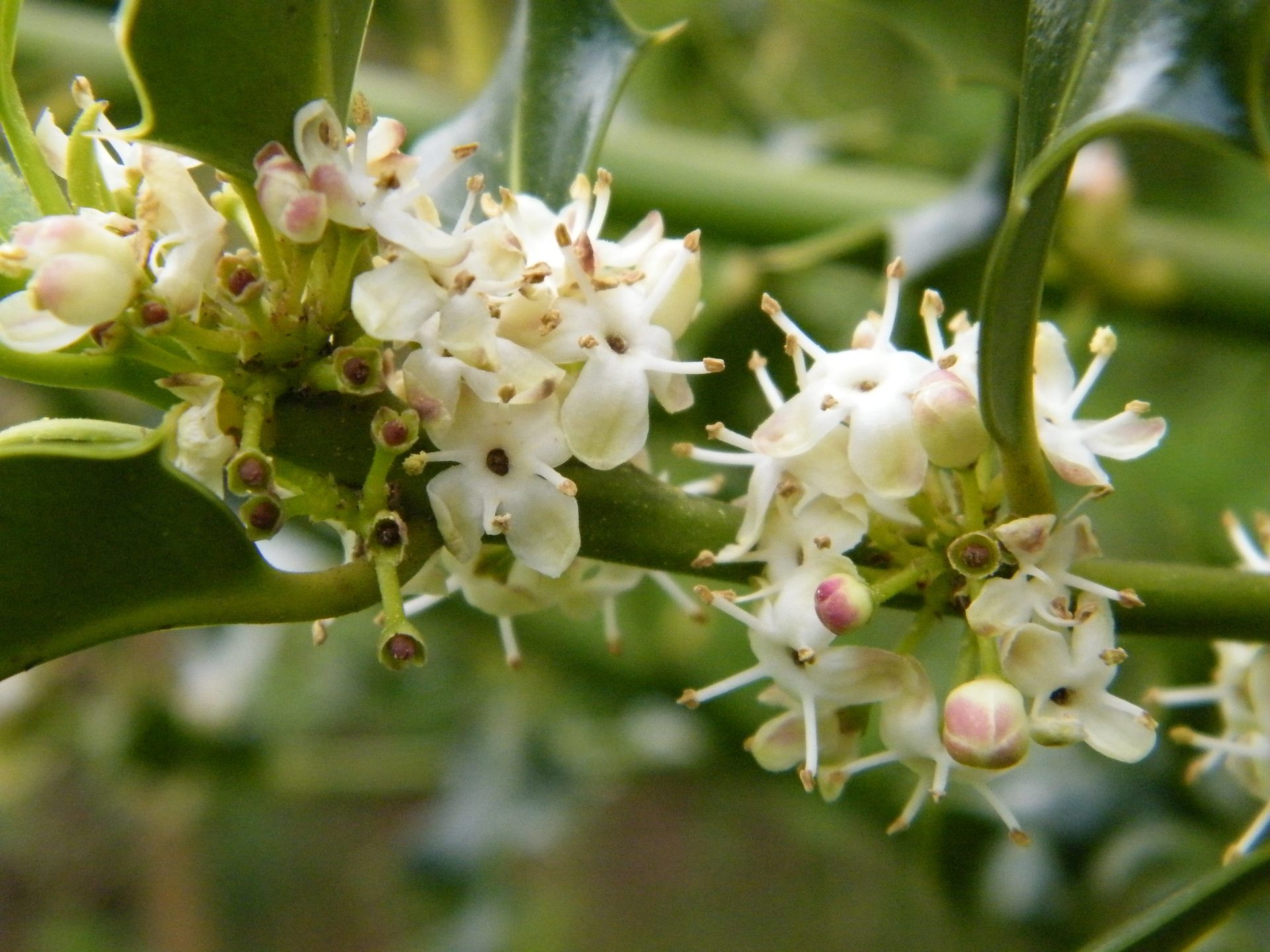
Male Holly flowers © Scamperdale (Flickr)
Fruits: Only female trees develop fruits, which stay on the tree most of the winter. Strictly speaking, they are drupes (stone fruit), not berries. They are about 6–10mm in diameter and hold three to four seeds that take two to three years to germinate.
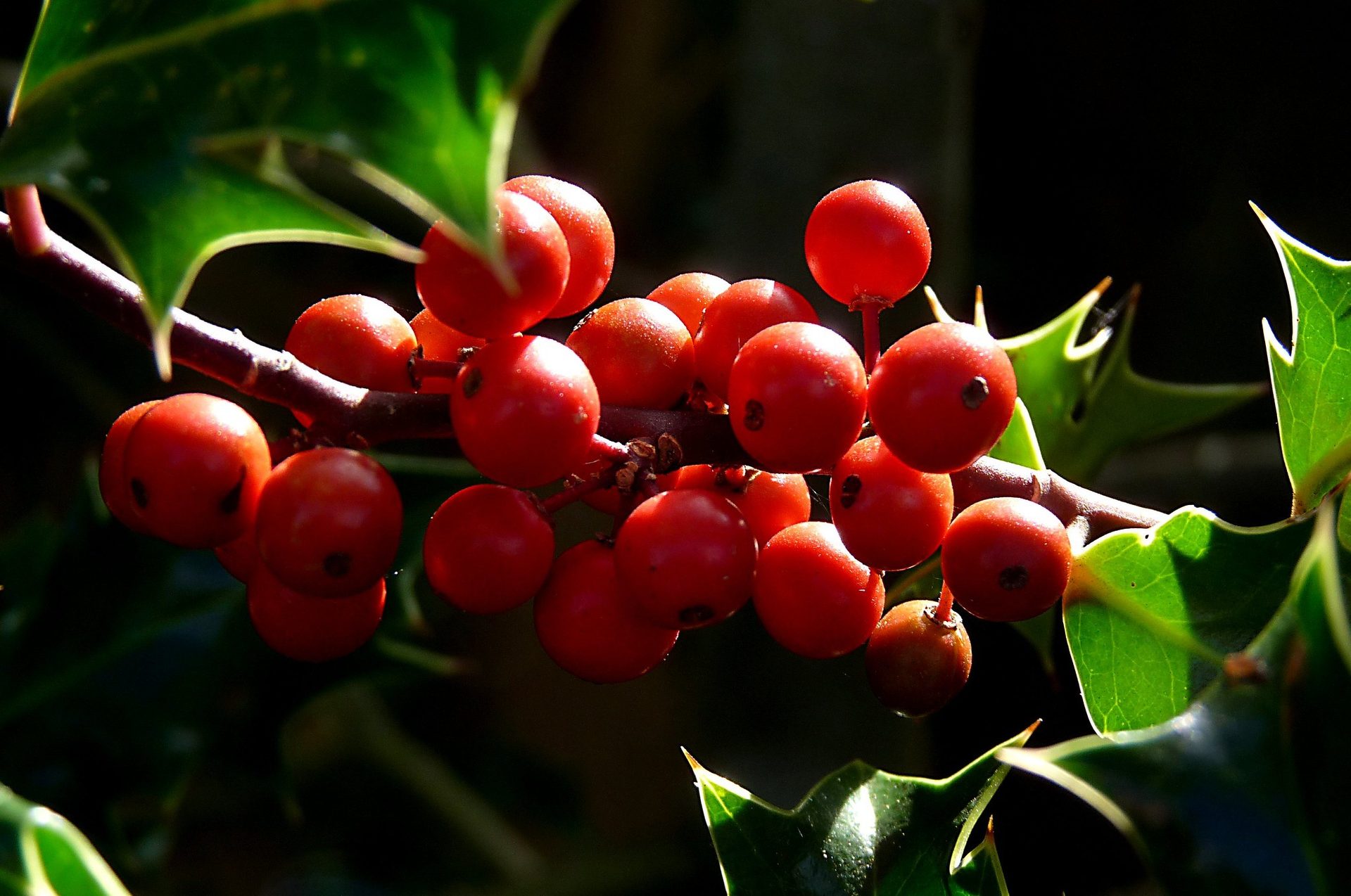
Holly berries © Hornbeam Arts (Flickr)
Left: Female flowers © Martin La Bar (Flickr) Right: Male flowers © Bjorn S... (Flickr) Slide bar to compare
The berries are so prized as a food source that Mistle Thrushes will energetically guard berry-laden bushes.
Mistle Thrush in a Holly bush showing the smooth edged leaves found at the top of a tree © Paul Green (Flickr)

Holly is common across Suffolk, although the number of planted trees has obscured the native pattern. Nevertheless, many fine old trees can be seen at Staverton Thicks, including one recorded as 22.5m high, making it one of the tallest Holly trees in the UK.
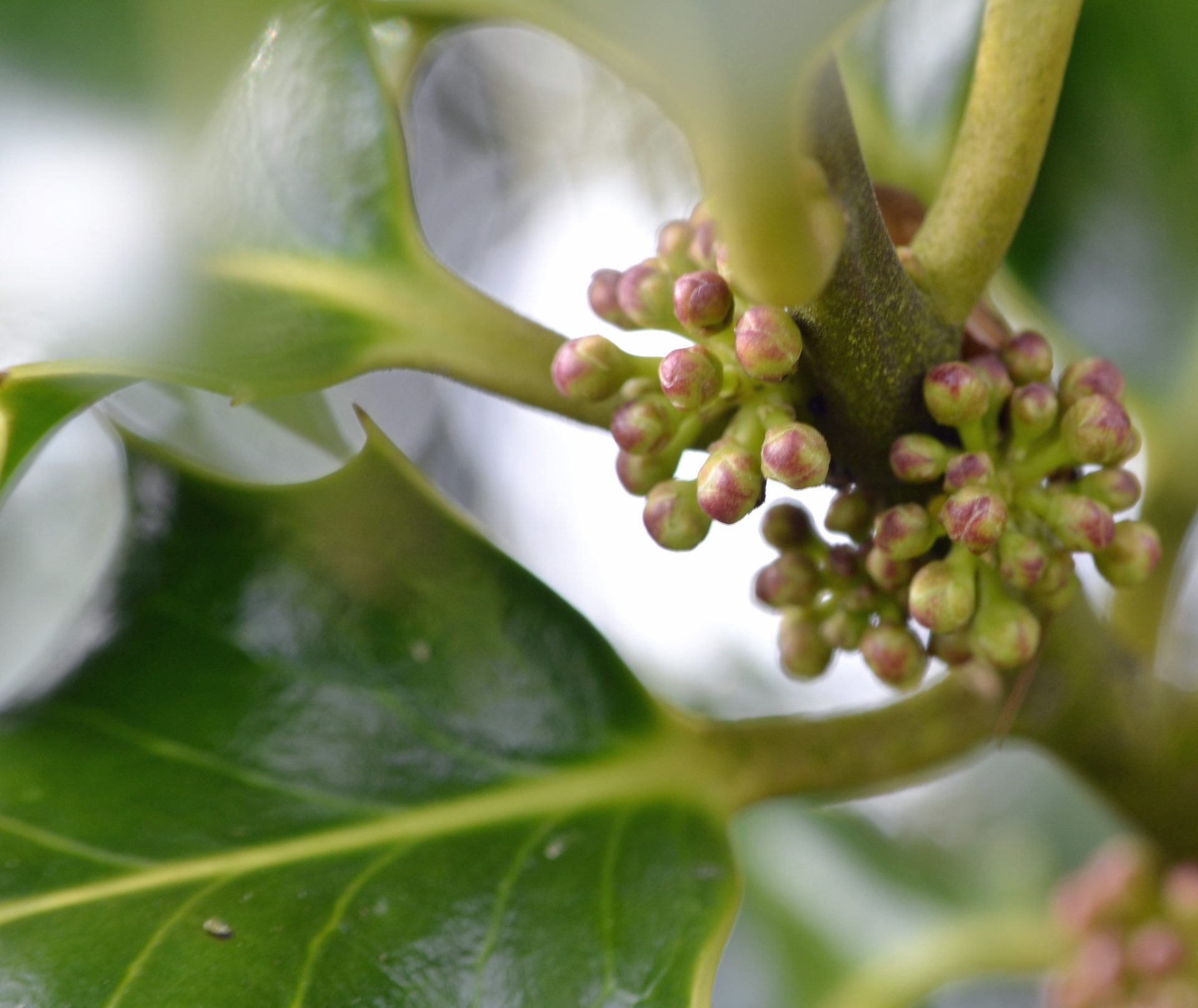
Holly is adaptable and can be found in a variety of habitats, from woodlands to gardens.
Holly flower buds © Conall (Flickr)
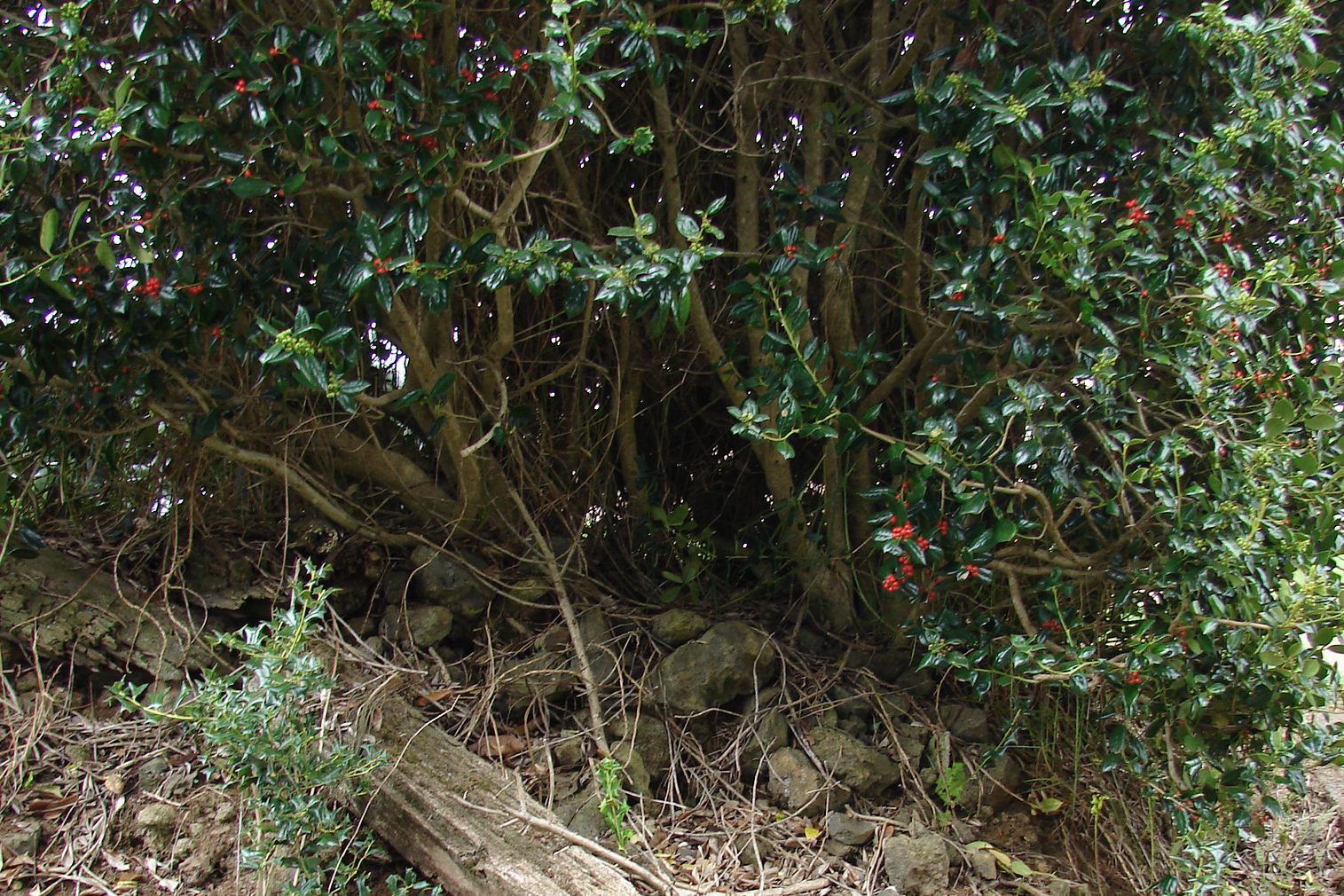
Stands of Hollies can create a maze that becomes a refuge for deer. Smaller birds are protected by their spiny leaves, while Hedgehogs, small mammals, toads and Slow worms use their deep leaf litter for hibernation.
Holly trunks © Forest and Kim Starr (Flickr)

The flowers provide nectar and pollen for bees (solitary, bumble and Honey bees), wasps, flies, and small butterflies.
Bee on holly flowers © Conall (Flickr)

The long, needle-like spines successfully deter browsing animals. However, the leaves growing near the top of the tree often have no spines, making them a good food source for deer that can reach the top of the plant.
Holly leaves are unpalatable to many insects and provide food for just 29 insect species, compared to nearly 200 for Hawthorn and over 260 for Blackthorn.
Holly leaves © Paul Horner (Flickr)
© Paul Kitchener (Flickr)
© Paul Kitchener (Flickr)
© Patrick Clement (Flickr)
© Paul Kitchener (Flickr)
© Charlie Barnes (Flickr)
Some insects that feed on Holly include the caterpillars of the Holly Blue, Yellow-barred Brindle, Double-striped Pug and Holly Tortrix, which eat the flowers, young berries and young leaves. In addition, the larvae of Holly Leaf Miners will tunnel through the leaf, feeding as they go and causing pale patches on the leaves.
Before the eighteenth century the topmost boughs of Holly, with smooth leaves, were used as winter fodder for cattle and sheep.
Cattle in a field © Emma Aldous
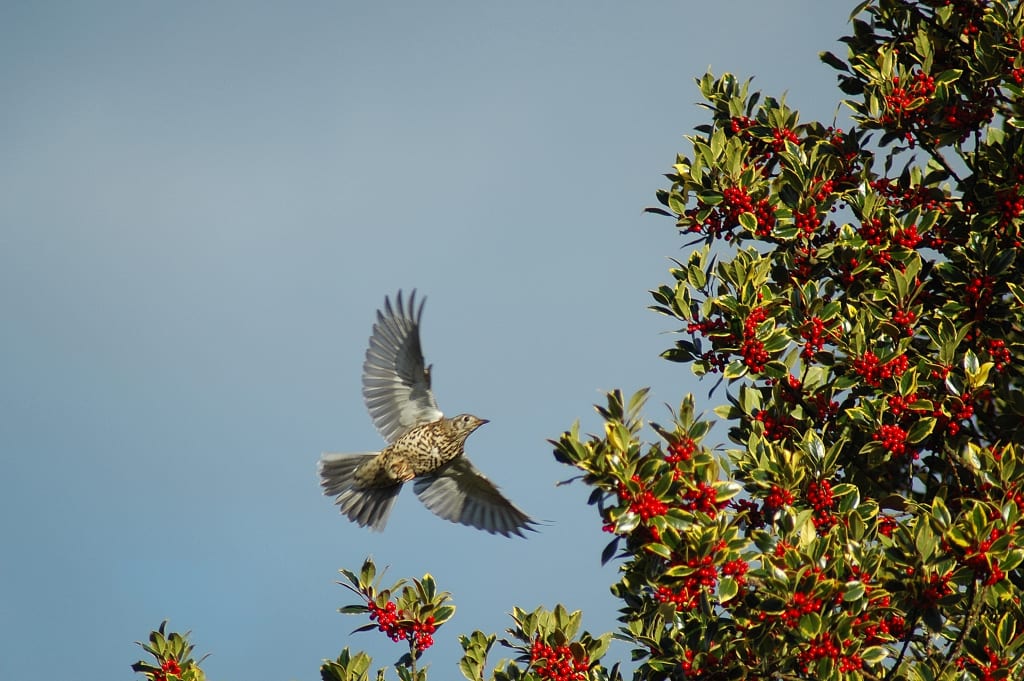
Mistle Thrush flying into a Holly tree © Sandy and Ingrid Morrison (Flickr)

The berries form an important food source for many birds (especially Blackbirds, Fieldfares, Redwings, Mistle Thrushes and Song Thrushes) and small mammals, such as Wood Mice and Dormice.
They contain mildly toxic compounds that make the berries hard and bitter. As winter advances, frosts break the chemicals down, making them softer and more palatable at a time of year when other food has become scarce. However, they still retain some toxicity, so birds only eat a few berries per visit. This feeding pattern spreads seeds over greater areas at lower concentrations.
Redwing perching in a Holly tree © Nicholas Turland (Flickr)

The Middle English word for Holly is hulver, hulfere, which comes from Old Norse hulfr (“Holly”). Hulver appears in Suffolk place names such as Hulver Street near Henstead and Hulverhill Covert. There are also several Hulver Farms and Hulvertree cottages in the county.
At Old Hall Wood, Bentley, there is a ring of six Hollies about 15m tall. Claude Morley, the founder of the Suffolk Naturalists’ Society, carved the year into one of the trunks whenever he visited the wood between 1892 and 1950. The carvings can still be seen today (pictured here).
© Steve Babbs
The wood is very white, hard and fine-grained. Making it ideal for furniture, engraving work, walking sticks and, traditionally, bagpipes. It is also good firewood as it burns with high heat. And, of course, Holly is commonly used at Christmas to decorate homes and make wreaths.
This small duck was carved from Holly wood by Cherokee
artist Virgil Ledford. © Mathers Museum of World Cultures (Flickr)
The Holly King and Oak King are personifications of winter and summer. The two kings engage in an endless "struggle" that echoes the seasonal cycles of the year. At Midsummer, the Oak King is at the height of his strength. At the Autumn equinox, the Holly King regains power and his strength peaks at Midwinter. Finally, the Oak King is reborn, regaining power at the Spring equinox, continuing the cycle.
Holly was seen as a fertility symbol. Probably because Holly remained green and full of berries when all else appeared dead in the winter. It became bad luck to cut down a holly tree. In some very superstitious areas Holly was encouraged to grow up through hedges to prevent the movement of witches, who apparently love to run along hedge-tops!
Oak and Holly leaves © Frank Vincentz / Dmitry Makeev (Wikimedia)
© Kentish Plumber (Flickr)
Holly is easily recognised by its combination of dark green, spiny, evergreen leaves and, in winter, small, bright red berries.